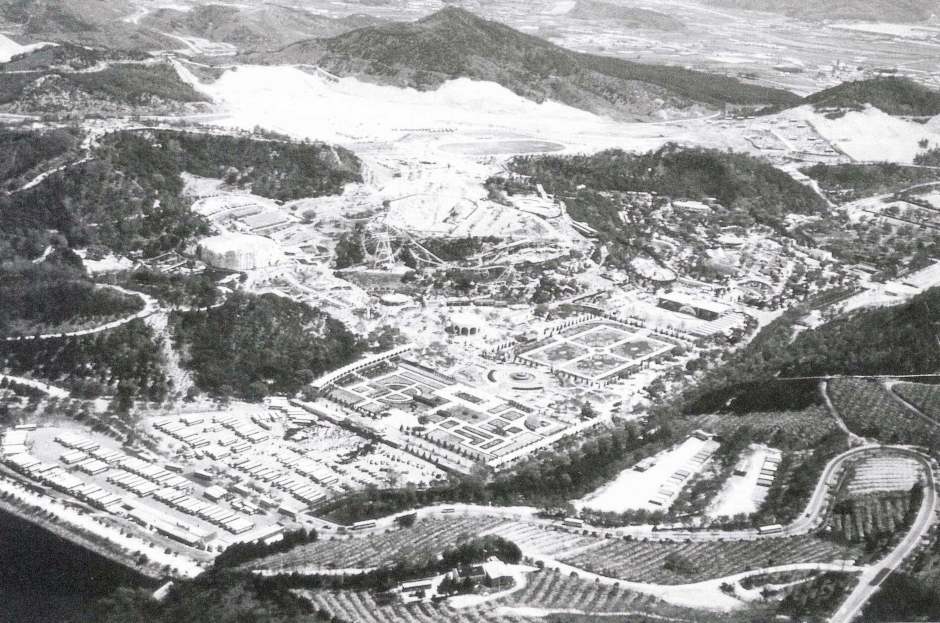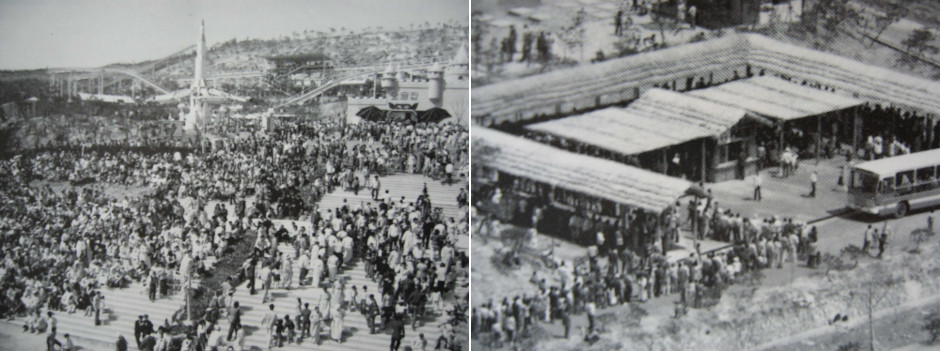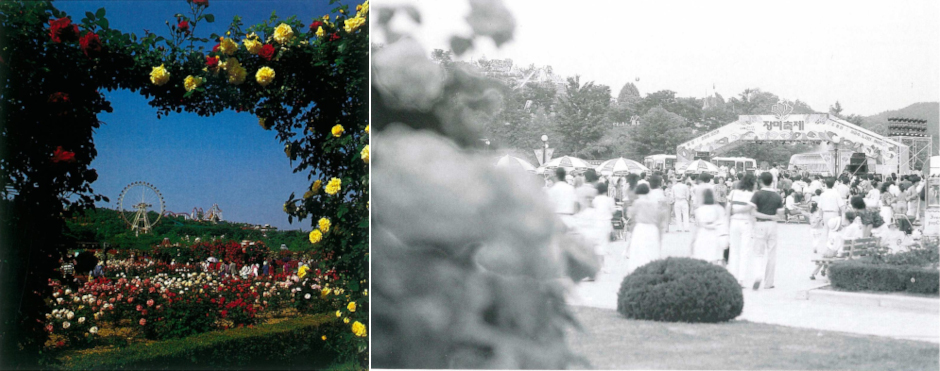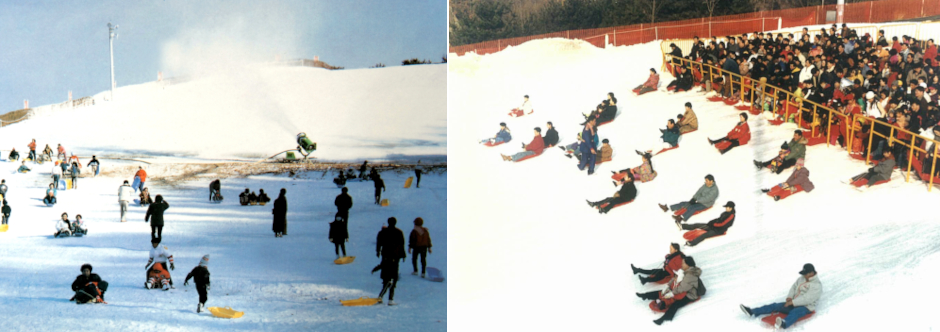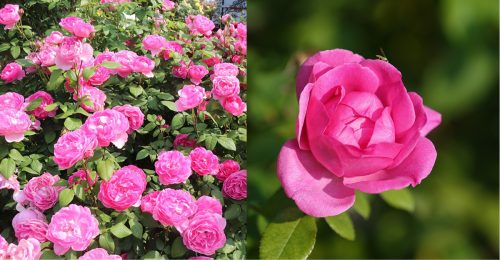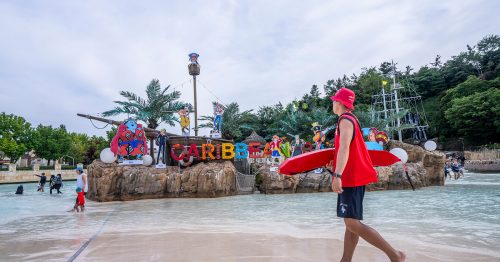Korea’s largest theme park Everland turns 45 this month, almost a half-century. The park has been leading Korea’s leisure trends at the forefront of the sector, recording many bests and firsts. Celebrating its 45th anniversary, let’s take a look back at some of the major milestones in the lifetime of this most stunning family attraction.
The beginning as Yongin Farmland
Everland first opened its doors on April 17, 1976 on the outskirts of Seoul as “Yongin Farmland.” The goal for this 66-hectare property was to become an amusement park where the whole family could have fun, and it was comprised of a family recreation park, botanical gardens to enjoy and learn about nature, and a free-range animal park complete with a children’s petting zoo.
The family recreation park first offered nine rides including Jet Coaster, a carousel, sports cars, boat rides, chair swings, and spinning teacups.
The zoo featured Asia’s first safari park to house freely prowling lions. The possibility of seeing real wild lions roaming around drew many thousands of visitors each day.
Yongin Farmland attracted crowds of happy people ever since it opened. Korea in the 1970s did not yet have a well-developed leisure and family entertainment culture, and Yongin Farmland broke new ground by providing a space of nature and rest for adults to escape from the then-common six-day workweek, and a world of fantasy and innocence for children to explore.
A new place for new leisure activities
The zoo continued to develop in the 1980s into a space for edutainment where visitors could learn about and experience the wonder of animals. The Asia-first lion safari was expanded to add tigers and bears. In 1996, a newly created savanna safari was also added, and the entire safari collection was renamed Safari World. It is definitely Everland’s most popular attraction, with the total number of visitors since 1976 having amounted to 84 million.
In 1985, Yongin Farmland played host to Korea’s first-ever rose festival, heralding the era of flower festivals that soon swept the nation. As well as becoming famous for holding Korea’s best floral extravaganza, the amusement park went beyond the mere visual, transforming itself through performances, parades and events, into a feast for all five senses.
In 1988, Yongin Farmland was reborn as an all-year-round leisure space with the opening of a sledding slope. Snow sledding gained huge popularity from the day of its opening, especially as a stress-free and fun winter leisure activity that the whole family could enjoy. The success of the sledding slope had a significant impact on the energizing of a wider Korean winter leisure culture. Since then, the slope has been open every winter under the new name the Snow Buster.
This is how Yongin Farmland, opened as an amusement park for the whole family, provided visitors with new kinds of fun and became Korea’s top leisure space. In the second half of this series, we will look at its transformation into a world-class theme park.


